If you need a quick answer to “What do ants eat?” The answer is nearly everything but wood, grass, and leaves. Sure carpenter ants don’t eat wood, they just chew through it, and harvester ants don’t eat grass; they eat grass seed and pull grass out to shade their mounds. But leaf-cutter ants eat some plants.
Seriously, ants eat just about any living matter. Their favorite food, guaranteed to attract them to your place, is sugar. Sugar in the form of sugar cane, high fructose corn syrup, hell, if it smells sweet, they will come running.
How to identify and get rid of fire ants.
How to identify and get rid of carpenter ants.
Beware of the red veil event ants.
How to get rid of harvester ants.
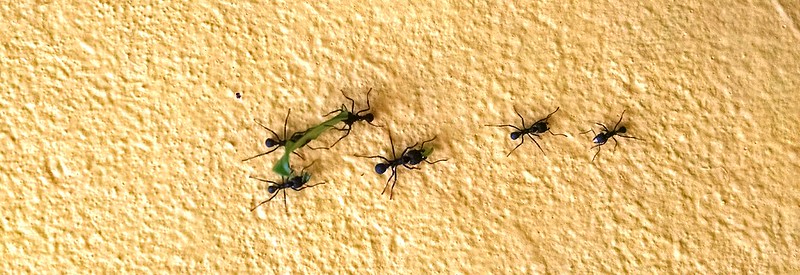
An ant in your kitchen might be a nuisance, but living on earth would be impossible without them. Ants introduce oxygen into the soil by turning it, and their tunnels let water and oxygen get down into plant roots. The seeds they carry down into their mounds end up becoming new plants.
And if you decide to declare war on that ant, remember the nineteen quadrillion nine hundred ninety-nine trillion nine hundred ninety-nine billion nine hundred ninety-nine million nine hundred ninety-nine thousand nine hundred ninety-nine (19,999,999,999,999,999) comrade-in-arms it has behind it.
To make dent and do your part in the War on Ants, you’ll need to kill about 2.5 million ants, before an ant eats you.
Related: Repelling squirrels.
Related: How to deal with suburban coyotes.
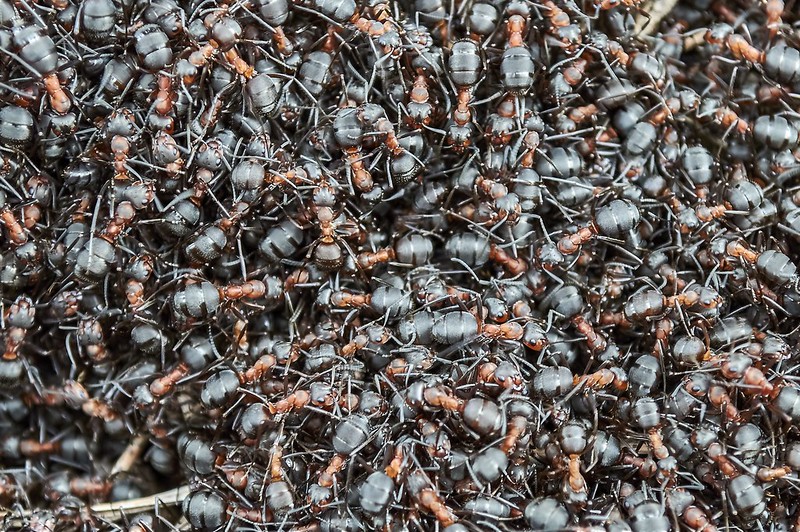
What do ants eat?
Ants eat meats and plants are omnivorous. Before we get into all the facts, trivia, and science of ants, consider the following verse of Scripture.
Proverbs 6:6–8 ESV: Go to the ant, O sluggard; consider her ways, and be wise. Without having any chief, officer, or ruler, she prepares her bread in summer and gathers her food in harvest.
The verse warns the lazy, but look how far it peeks into the massive society tunneling right under our feet. From this small paragraph, we learn; ants work without being told they must work, store a part of their harvest for the future, and seem to be aware of the concept of time.
Ants have organized social lives and live in colonies whose organization rivals only termites and honey bees. So the point is, the question isn’t what do ants eat, but what will the other ants need to eat?
Related:How long do ants live?
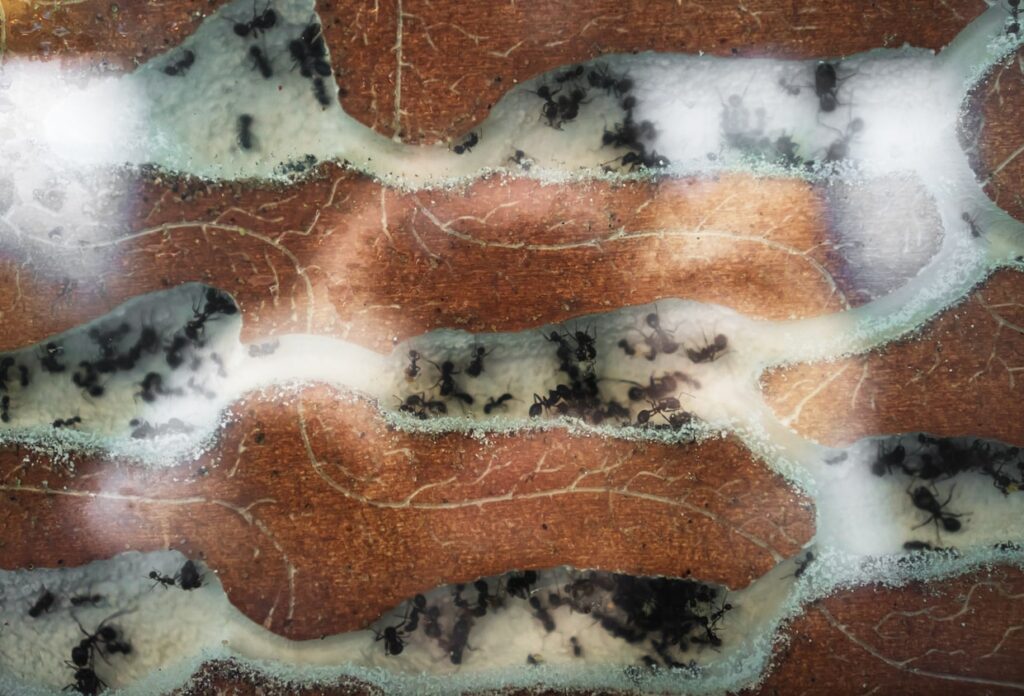
Related: How to repel bears from your property.
What do ants eat in an ant farm?
You do not need to be a scientist to research what ants eat. Indeed, you may have learned it as a child. Did you ever have an ant farm? If you did, what did you feed your ants?
Chances are your ant farm came with special sand, a glass box, and about two dozen red harvester ants. We will ignore the blue gel ant farms; for now, those ants eat the gel, but a sand ant farm requires you to provide additional nutrition every 2-3 days. You likely fed them using pre-made food packets mom or dad purchased from the ant farm supplier.
Those food packets contained whole grains. The harvester ants you received used their mandibles to grind seeds into what the ant farm manufacturer’s called “ant bread.” This bread was stored in granaries throughout the nest and accessed as needed.
You also got a little container of sugar water (mixed with honey) to drip on the food.
In other words, you fed your ants carbohydrates and water. This is because your ants were adult workers, and adult ants didn’t keep growing and didn’t need protein.
Quick side note for those of you who never had an ant farm. An ant farm colony never grows in numbers; all the ants are typically dead in 30 to 90 days. By law, you can’t sell or ship a queen ant, and since only the queen reproduces and ants won’t tolerate the introduction of new ants, the colony quickly dies off.
So your ant farm is a tiny ant colony that resembles an actual colony whose queen has died. The colony will die, but the workers will continue to carry on for 1-3 months. With no larvae or a queen to feed, they only need carbohydrates and water to survive.
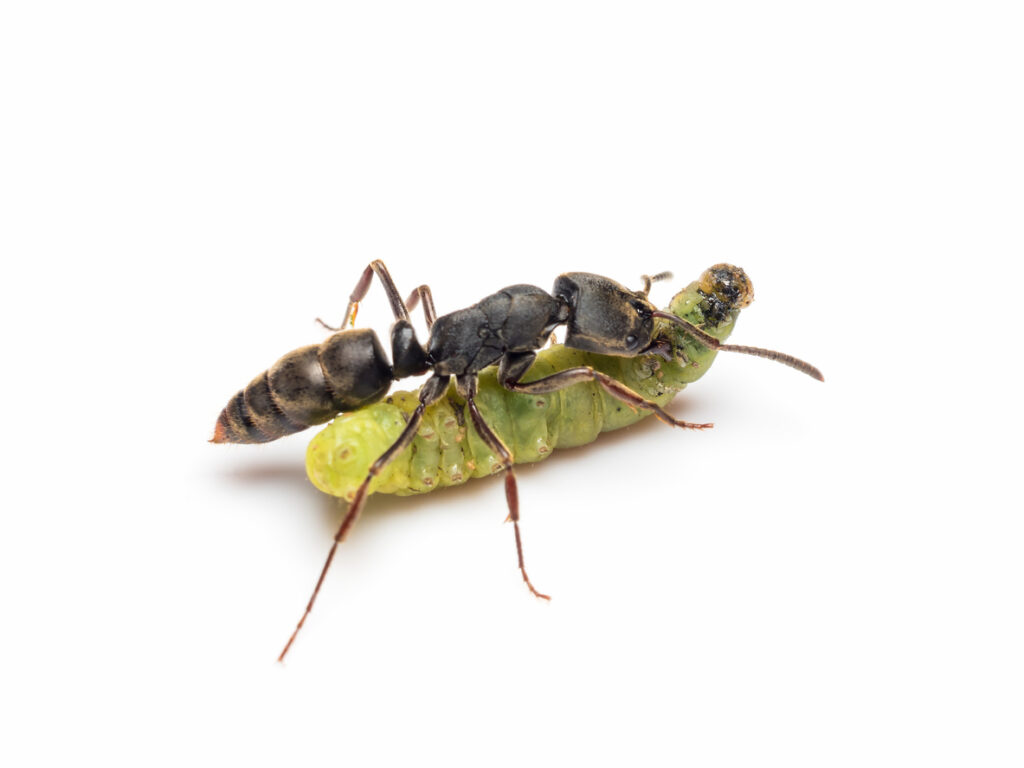
In the wild ants need protein to take back to the colony.
Larvae and queen ants need protein, and it’s the worker’s job to bring it back to the colony. In the wild, the workers spend every waking moment (yes, worker ants do sleep) locating and collecting these proteins, along with carbohydrates and water. Indeed, harvester ants will toss sand into water and bring the moist sand back to their colony.
Once the food is brought into the colony, the workers will chew it up and feed it to the larvae and queen, or store it for future use.
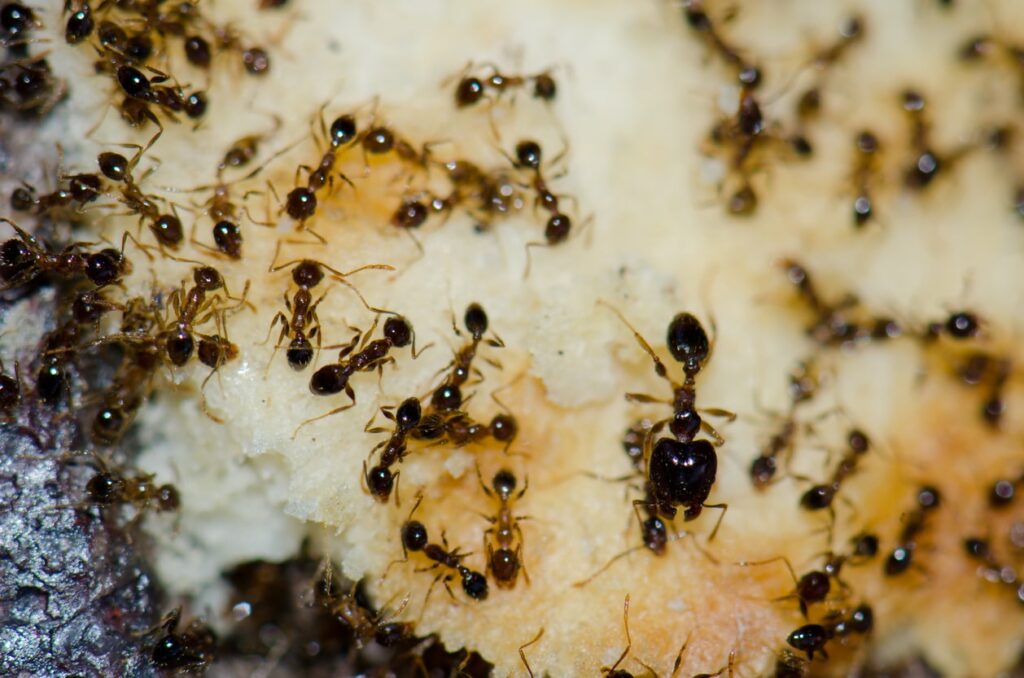
What does the most common ant in the U.S. eat?
One of the most common ants you will find in your house is the Argentine ant (Linepithema humile).
Outside, the Argentinian ant will collect and return almost anything as food to its colony. Argentine ants eat or harvest proteins from carrion, dead insects, and pet food dishes left outside. They also have a relationship with aphids, whiteflies, and mealybugs, protecting them in return for harvesting their honeydew.
The tiny Argentinian invader inside your home came from a nearby colony and is one over several hundred to several hundred thousand workers out searching for food. It gained access through a crack or hole as small as 0.04” in size.
Your ant friend came into your house searching for food or water because there was none available locally, it was too hot or dry outside, or heavy rainfall pushed it out of its nest. It leaves a chemical trail behind; if it finds and returns food, other ants will know precisely how to find it.
The Argentine ant won’t bite you, but if it brings a host of friends into your house, those friends walk all over your sink and dishes with their germ-laden feet. And the ant is female. Male ants have wings and die soon after mating. Only females who do not become queens become workers.
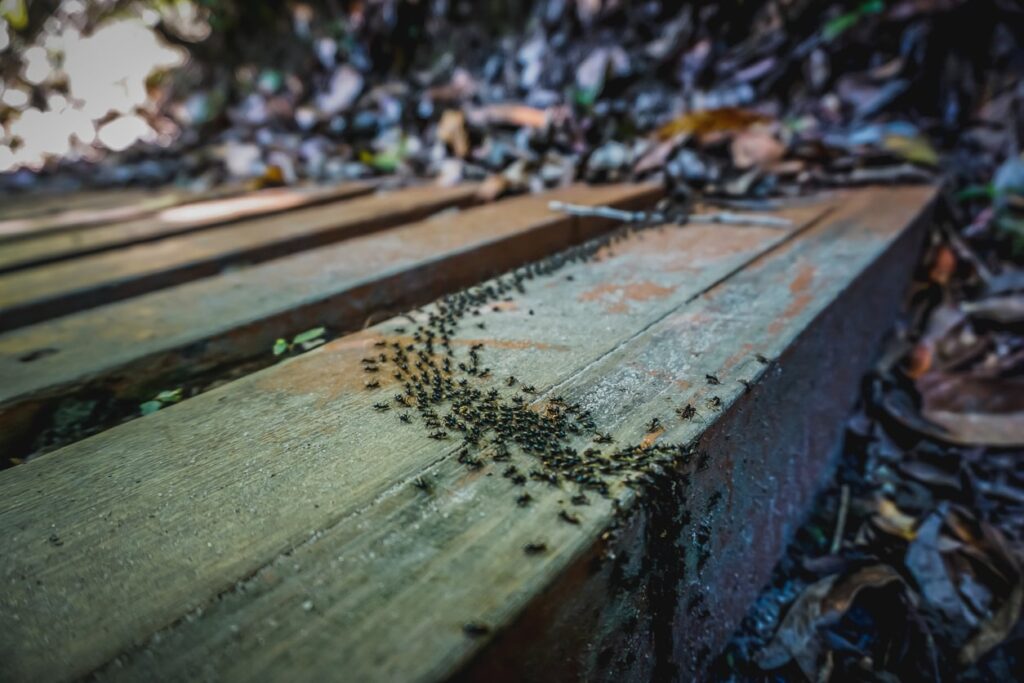
An Argentine ant eats anything made of plants or meats it finds in your home. Sugar is its favorite, and any drink cans or spills with high fructose corn syrup or anything that smells sweet will seize the ant’s attention if it gets within a foot of it.
The ant will also try to carry home any food crumbs and dead bugs it finds.
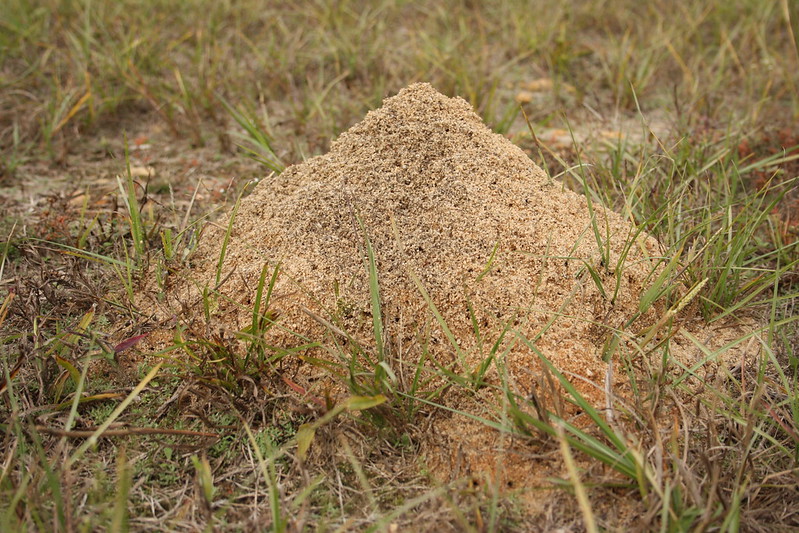
What do Fire ants eat?
Fire ants eat anything they want to! They are omnivores like other ants, eating plants or meats. But unlike many other ants, they actually kill some birds, small rodents, and lizards.
You probably don’t really care what fire ants eat, you came here because you found their nesting mound near you garage, home, dog house, or the wall of your house. If so, check out this government website for fire ant information.
If you find a fire ant in your home, what that ant eats is of no concern to you, nor is its bite. The problem with fire ants isn’t so much what the ants eat, its how they react to being attacked.
Do you know what the worst thing a fire ant can do to you? Burn your house down!
Fire ants can get into cracks in your home’s foundation, slip in between your windows and doors, or even enter through your air conditioner. If one of them screws up and makes electrical contact, it sends an alarm signal out as it is electrocuted that causes a swarm of angry fire ants to swamp that area with ant bodies. These ants eat nothing, but their toasting bodies can cause a fire.
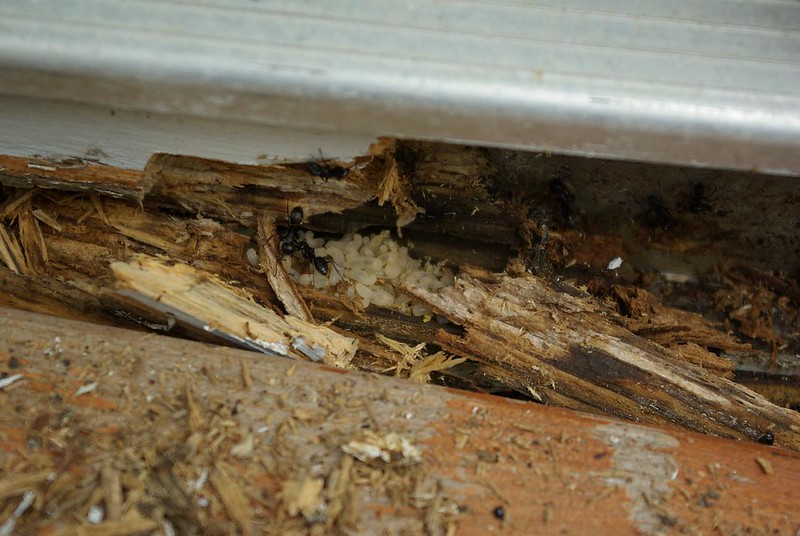
What do carpenter ants eat?
Carpenter ants eat the same things other ants eat. Plants, fruits, meat, grease, and other insects. What they do not eat is wood.
Let me save you some money. I kept finding frass on my three-season front porch. Frass is a fine powdery refuse produced by the activity of boring insects. I did not know what it was, but it spread, and I called my local pest control guy.
He diagnosed my problem as carpenter ants. For the next two years, I paid $65 a month to watch him spray chemicals all along the exterior of my house. At the same time, the piles of frass expanded to other areas of the porch.
Frustrated, I googled “frass.” I then noticed the definition included the phrase “boring insects.” The funny thing was carpenter ants leave their frass at their nests’ (noticeable) entrance. However, I found frass on the floor underneath the holes in the ceiling.
I actually had powder post beetles from firewood stored on the porch. Unfortunately, the idiot who actually carried a stethoscope to “listen to carpenter ants checking through my wood” had guessed wrong. I ended up paying him about $2,000 before I realized his mistake.
I bought a single bag of Tim-bor, mixed it, and sprayed it on my porch. Five years later, I still have half a bag, and there has never been a single bit of frass or new holes in my ceiling.
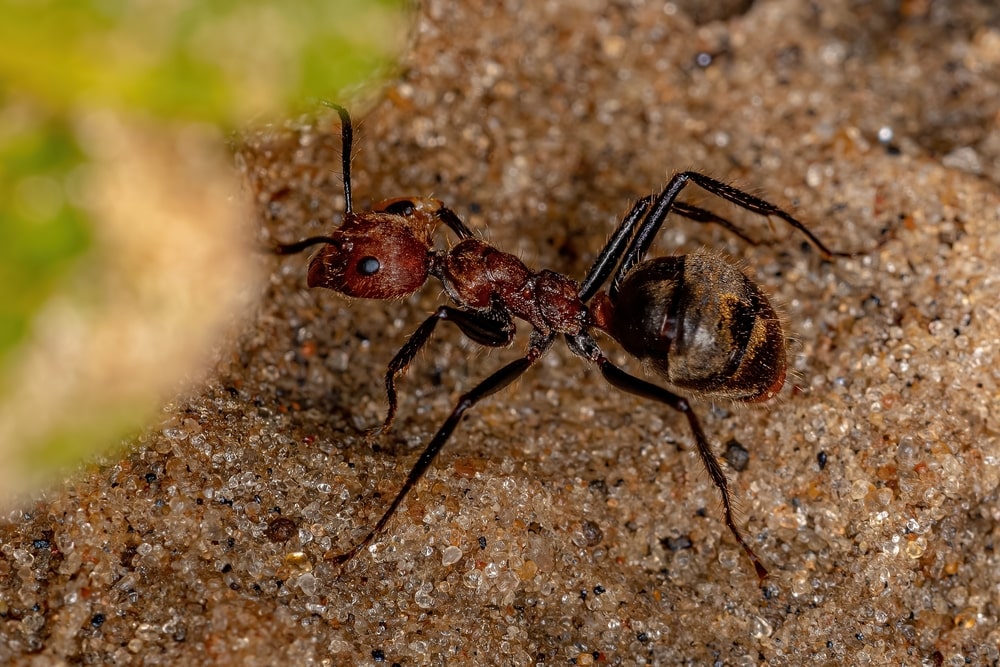
What do odorous ants eat?
Odorous ants eat the same thing as other ants, but in the fall, they love to send worker ants to forage through your home looking for anything meaty or sugary.
If odorous ants build a best in your house this autumn, they’ll likely place it inside walls next to a leaky fixture like hot water heaters or pipes. Indeed, they often show up in my firewood stored outside.
Ants eat just about anything!
Ants eat insects, dead animals, stuff you drop on your kitchen floor and don’t pick up right away, and even other ants. And, if things in the nest get terrible, the queen ant eats her own people.
In the ant world, whatever it takes to ensure the colony’s survival, that is what ants eat.

